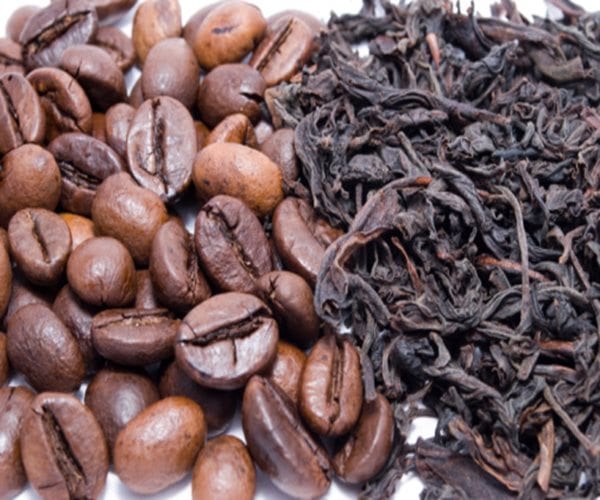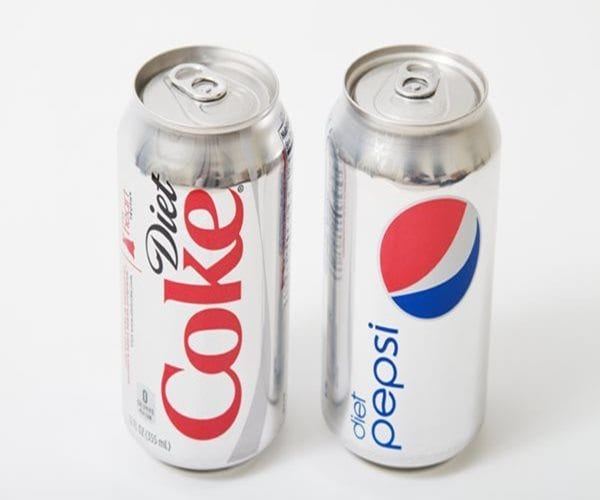Diets
Back Clinic Diets. The sum of food consumed by any living organism. The word diet is the use of specific intake of nutrition for health or weight management. Food provides people with the necessary energy and nutrients to be healthy. By eating various healthy foods, including good quality vegetables, fruits, whole-grain products, and lean meats, the body can replenish itself with the essential proteins, carbohydrates, fats, vitamins, and minerals to function effectively.
Having a healthy diet is one of the best things to prevent and control various health problems, i.e., types of cancers, heart disease, high blood pressure, and type 2 diabetes. Dr. Alex Jimenez offers nutritional examples and describes the importance of balanced nutrition throughout this series of articles. In addition, Dr. Jimenez emphasizes how a proper diet combined with physical activity can help individuals reach and maintain a healthy weight, reduce their risk of developing chronic diseases like heart disease, and ultimately promote overall health and wellness.

by Dr Alex Jimenez DC, APRN, FNP-BC, CFMP, IFMCP | Diets, Fitness
Bathing suit season is here, and for many of us that means no longer being able to hide those extra pounds beneath a chunky sweater. Fortunately, there are some small and easily implemented lifestyle adjustments that can quickly shrink your waistline.
Here are 10 ways to slim down for swimsuit season. The best part? None involve the gym.
Plan ahead: Making meals ahead of time can save you calories in the long run. Try cooking up large-batch dinners over the weekend and simply reheat throughout the week. Lisa Lillien, author of the “Hungry Girl” Website, featuring advice on guilt-free eating, suggests emphasizing lean proteins and veggies. Commit time on the weekend to meal prep and all you have to do is throw the ingredients in the pan during the week.
Drink more: Water, that is. Staying hydrated is important for your overall body function and can prevent you from feeling hungry. Sometimes the body confuses dehydration with the sensation of hunger. This problem comes with an easy solution — drink more water. Bring a travel water bottle with you when you’re on the go so you can remember to stay hydrated.
Limit or avoid alcohol: Cutting out alcohol is one of the quickest ways to lose weight. Alcohol triggers a process in the body similar to sugar. It can set off the same insulin resistance that can cause weight gain. For six days of the week, cut out alcohol.
Snack on healthy foods: Keep a variety of healthy snacks around to satisfy cravings. Protein bars and nuts are great snacks that will satisfy your hunger and prevent you from making poor food decisions at meal times. Fresh fruit and veggies are another great snack option.
Banish stress: Maintaining a healthy diet isn’t about never indulging. It’s about eating healthy foods the majority of the time and treating yourself on occasion. Don’t stress out if you veer off course. Instead, do what you can to get back on track. Stress can actually be a source of weight gain, so try to focus on the positive.
Careful with carbs: Processed white carbs are a no-no. They spike blood sugar levels and cause the pancreas to produce insulin, which causes the accumulation of fat. Instead, opt for refined carbs like brown rice and oats.
Start with soup: According to research from Penn State University, soup is a great diet food. The combination of liquids and solids helps make you feel full faster. Eat it before a meal and you may be able to decrease your overall calorie intake by up to 20 percent.
Consider your coffee: Black coffee isn’t a diet buster — it’s the milk and sugar that go in it. A latte from your favorite coffee shop can be a hidden source of fat and calories. Try swapping your usual espresso for a plain black or green tea.
Stop multitasking: A recent study in the American Journal of Clinical Nutrition found that multitasking while you eat will leave you feeling unsatisfied. Instead, slow down and enjoy your time savoring your meal without the distractions.
Spice it up: According to a recent study led by David Heber, a professor of medicine and director of the Center for Human Nutrition at the University of California-Los Angeles, capsaicin — the compound found in chili peppers — speeds metabolism and helps burn calories. Participants in the study were given a capsaicin supplement or a placebo for four weeks. The group who received capsaicin burned more fat for several hours after the meal for a total of 100 to 200 more calories a day. Spicy foods may also make you feel fuller more quickly than bland foods.

by Dr Alex Jimenez DC, APRN, FNP-BC, CFMP, IFMCP | Diets, Fitness
If you’re concerned about your body image, engage in a bout of exercise. Researchers at the University of British Columbia found that just one 30-minute exercise session makes women feel stronger and thinner.
“Women, in general, have a tendency to feel negatively about their bodies,” says study senior author Kathleen Martin Ginis, professor in UBC Okanagan’s School of Health and Exercise Sciences.
“This is a concern because poor body image can have harmful implications for a woman’s psychological and physical health including increased risk for low self-esteem, depression and for eating disorders,” she said. “This study indicates exercise can have an immediate positive effect.”
Researchers compared the body image and physical perceptions of women who completed 30 minutes of moderate aerobic exercise with those who sat and read. Women in the exercise group had significant improvements in their body image compared to those who didn’t exercise.
The positive effect lasted at least 20 minutes post-exercise. In addition, the research team found that the effect was not due to a change in the women’s mood, but was linked to perceiving themselves as stronger and thinner.
“We all have those days when we don’t feel great about our bodies,” says Martin Ginis. “This study and our previous research shows one way to feel better, is to get going and exercise. The effects can be immediate.”
According to the National Institutes of Health, nearly one half of North American women experience some degree of body image dissatisfaction, and the problem has grown over the last three decades.
Many previous studies have found that exercise has a positive effect on other aspects of mental health including lifting depression and easing anxiety. A study published in Psychosomatic Medicine found that exercise was comparable to antidepressants in treating patients with major depressive disorder.
The exercise doesn’t have to be strenuous to be helpful. A recent study from the University of Connecticut shows that if you’re sedentary, just getting up and moving around can reduce depression and make you feel better about yourself.

by Dr Alex Jimenez DC, APRN, FNP-BC, CFMP, IFMCP | Diets, Fitness
Regularly drinking coffee or herbal tea may help prevent chronic liver disease, new research suggests.
Scientists in the Netherlands found these popular beverages might help thwart liver fibrosis, or stiffness and scarring due to chronic inflammation.
“Over the past decades, we gradually deviated towards more unhealthy habits, including a sedentary lifestyle, decreased physical activity, and consumption of a ‘happy diet,’ ” said study lead author Dr. Louise Alferink.
This “happy diet” — commonly known as the Western diet — is rich in sugary, processed foods that lack nutrients. This unhealthy way of eating has contributed to the obesity epidemic and a surge in nonalcoholic fatty liver disease, which occurs when excessive amounts of fat accumulate in the liver, said Alferink, a researcher at Erasmus MC University Medical Centre in Rotterdam.
To investigate the possible protective effects of coffee and tea, researchers examined data on more than 2,400 Dutch individuals age 45 or older who did not have liver disease. The investigators examined medical records, including results of abdominal and liver scans. They also analyzed responses to food and beverage questionnaires that asked about tea and coffee consumption.
The study participants were divided into three groups based on their coffee and tea consumption. The researchers also noted what type of tea the people drank, including herbal, green or black.
They found that frequent coffee drinkers had significantly lower risk for liver stiffness and less scarring regardless of their lifestyle and environment. Overall, frequent herbal tea and coffee drinking appeared to have a protective effect on the liver and prevent scarring among those who had not yet developed any obvious signs of liver disease, researchers said.
The study results were published June 6 in the Journal of Hepatology.
“Examining accessible and inexpensive lifestyle strategies that have potential health benefits, such as coffee and tea consumption, is a viable approach to finding ways to halt the rapid increase of liver disease in developed countries,” Alferink said in a journal news release.
Already, there is some experimental data suggesting that coffee has health benefits on liver enzyme elevations, viral hepatitis, fatty liver disease, cirrhosis and liver cancer, said the study’s principal investigator, Dr. Sarwa Darwish Murad.
“The exact mechanism is unknown but it is thought that coffee exerts antioxidant effects,” said Murad, a hepatologist at the medical center. “We were curious to find out whether coffee consumption would have a similar effect on liver stiffness measurements in individuals without chronic liver disease.”
However, the study can’t prove that coffee and teas actually improve liver health. And the researchers concluded that more research is needed before making general recommendations.
Also, the study had limitations, according to the authors of a journal editorial. For one, most people in the study were older and white. In addition, the beverage components were too varied to reliably estimate any benefits, they said.

by Dr Alex Jimenez DC, APRN, FNP-BC, CFMP, IFMCP | Diets, Fitness
One-third of the world’s population is overweight, with the prevalence of obesity doubling in 70 countries since 1980, and bulging waistlines are driving up health problems such as cardiovascular disease, according to a new study published in the New England Journal of Medicine.
In the United States, 13 percent of children and young adults are obese, the most of any other country, CNN reported.
Worldwide, 2.2 billion people were obese or overweight in 2015.
“People who shrug off weight gain do so at their own risk — risk of cardiovascular disease, diabetes, cancer, and other life-threatening conditions,” said Dr. Christopher Murray, director of the Institute for Health Metrics and Evaluation at the University of Washington, who worked on the study, according to CNN.
“Those half-serious New Year’s resolutions to lose weight should become year-round commitments to lose weight and prevent future weight gain,” he added.
In 2015, about 4 million people died of health problems linked to excess weight, Canadian Broadcasting Corporation reported, noting that death rates related to being overweight rose 28 percent since 1990.
Poor diets and sedentary lifestyles brought on by urbanization and economic development have spread the obesity epidemic worldwide.
“People are consuming more and more processed foods that are high in sugar and fat and exercising less,” said Boitshepo Bibi Giyose, senior nutrition officer at the U.N. Food and Agriculture Organization, according to CBC.
The study was completed by the Institute for Health Metrics and Evaluation at the University of Washington and funded by the Gates Foundation, The New York Times noted.
Nearly 604 million adults and 108 million children worldwide are obese, meaning they have a body mass index of 30 or higher.
“This study shows what we know: No country in the globe has reduced overweight or obesity levels,” said Barry Popkin, a professor of nutrition at the University of North Carolina, according to the Times. “This is astounding given the huge health and economic costs linked with overweight and obesity.”
Adam Drewnowsk, director of the Center for Public Health Nutrition at the University of Washington, said solutions aren’t easy.
“It is all very nice to talk about the need to eat less unhealthy foods and more healthy foods,” he said, according to the Times. But “unhealthy foods cost less; healthier foods often cost more. People eat what they can afford.”

by Dr Alex Jimenez DC, APRN, FNP-BC, CFMP, IFMCP | Diets, Fitness, Pregnancy
Women who drink diet drinks while pregnant almost double the risk that their child will be overweight or obese at 7 years of age, says a study lead by researchers at the National Institutes of Health. Childhood obesity is known to increase the risk for health problems later in life, such as diabetes, heart disease, stroke, and some cancers.
Researchers found that as the volume of amniotic fluid increases, pregnant women tend to increase their consumption of fluids. To avoid extra calories, many women replace sugar-sweetened soft drinks and juices with beverages containing artificial sweeteners.
Previous studies of adults have found that artificially sweetened beverages encouraged weight gain, and the study authors sought to discover if drinking diet beverages during pregnancy had an effect on the weight of children.
“Our findings suggest that artificially sweetened beverages during pregnancy are not likely to be any better at reducing the risk for later childhood obesity than sugar-sweetened beverages,” said the study’s senior author, Cuilin Zhang, Ph.D.
“Not surprisingly, we also observed that children born to women who drank water instead of sweetened beverages were less likely to be obese by age 7.”
The researchers limited their analysis to data from more than 900 pregnancies that were complicated by gestational diabetes, a type of diabetes that occurs only during pregnancy.
Approximately 9 percent of these women reported consuming at least one artificially sweetened beverage each day. Their children were 60 percent more likely to have a high birth weight, compared to children born to women who never drank sweetened beverages.
At age 7, children born to mothers who drank an artificially sweetened beverage daily were nearly twice as likely to be overweight or obese.
Drinking a daily artificially sweetened beverage appeared to offer no advantages over consuming one sweetened by sugar. At age 7, children born to both groups were equally likely to be overweight or obese.
Women who substituted water for sweetened beverages, however, reduced their children’s obesity risk at age 7 by 17 percent.
Scientists aren’t sure why drinking artificially sweetened beverages compared to drinking water may increase obesity risk. The authors cited an animal study that associated weight gain with changes in the types of bacteria and other microbes in the digestive tract.
Another animal study suggested that artificial sweeteners may increase the ability of the intestines to absorb the blood sugar glucose. Other researchers found evidence in rodents that, by stimulating taste receptors, artificial sweeteners desensitized the animals’ digestive tracts, so that they felt less full after they ate and were more likely to overeat.
According to the Centers for Disease Control and Prevention, the percentage of obese children has more than tripled since the 1970s. Today, 1 in 5 children between the ages of 6 and 19 are obese.
In addition to increased health risks as adults, obese children also have an increased risk of chronic health problems, such as asthma and Type 2 diabetes. They are also more likely to be bullied, and to suffer from depression and lower self-esteem.

by Dr Alex Jimenez DC, APRN, FNP-BC, CFMP, IFMCP | Diets, Fitness
For years, you probably have been told that wheat bread is far better for you than its white counterpart, but a small, new study suggests that maxim may not hold true for everyone.
Researchers looked at how quickly blood sugar levels rose after eating (a process called the glycemic response) either white bread or sourdough-leavened wheat bread. The researchers found that the response seemed to vary by person, and that some people didn’t have a bad glycemic response to white bread.
“Our study suggests that, in terms of glycemic responses, different people respond differently to even the same meal,” explained study author Eran Segal, from the Weitzman Institute of Science in Rehovot, Israel.
“In the context of white bread, this means that some people respond badly to white bread and should probably avoid it, while others have a healthy response to it, given what we measured,” Segal said.
“In a broader sense, what this means is that the ‘one-size-fits-all’ diets that are given to the population as a whole, without personalization, are probably not optimal for everyone,” added study co-author Dr. Eran Elinav, who’s also from the Weitzman Institute.
The researchers theorized that differences in the gut microbiome (the natural bacteria living in a person’s intestine) may explain why people respond differently to different breads. The researchers added that they were able to predict what a person’s glycemic response would be to a particular bread based on the makeup of their microbiome.
Both Segal and Elinav did report they are paid consultants for a company that offers personalized dietary advice based on an individual’s gut microbiome.
At least one nutritionist wasn’t convinced that people should give up on whole grains.
“This small, short-term study does not offer a free pass to eating tons of highly processed white bread,” said Samantha Heller, a senior clinical nutritionist from New York University Langone Medical Center.
“Epidemiological research has shown that people who eat more whole grains, such as whole grain breads, crackers, cereals, brown rice and quinoa, have a reduced risk of type 2 diabetes, heart disease, inflammation, obesity and certain cancers,” Heller noted.
In addition, she said, whole grains have a balance of vitamins, minerals and other nutrients that white bread doesn’t. Plus, Heller said, fiber is the “preferred meal for gut microbiota.”
The study included 20 people from Israel. They were between 27 and 66 years old. Eleven were female, the researchers said.
Each volunteer spent a week eating white bread and a separate week eating artisanal sourdough-leavened whole wheat bread.
They ate bread first thing in the morning. Half the time, they were allowed butter on their bread. They couldn’t eat anything else beginning the night before, and then for two hours after eating the bread. They also weren’t allowed to exercise for two hours after eating, because all of these things can alter the glycemic response.
Across the groups, the researchers found a similar response to the breads when averaged together. There were no significant overall differences based solely on the bread and glycemic response. The researchers also said there didn’t seem to be a difference in the gut microbiota based on which bread was eaten.
“Our study challenges the common belief that types of food that are considered healthy are indeed healthy. We know that people are different in their genetic makeup and lifestyle, and here we show that people have rather stable and person-specific microbiomes,” said Avraham Levy, one of the study’s researchers. He’s also from the Weitzman Institute.
“These differences between people affect how they respond to even the same meals, which means that foods which are considered healthy may not be as healthy for everyone, and vice versa,” Levy said.
The scientists noted that more research needs to be done. Funding for the study came from the Israeli Ministry of Science, Technology and Space, as well as from private foundations and donors.
In the meantime, a number of groups recommend eating whole grain foods instead of processed white foods. These groups include the U.S. federal government, the American Heart Association, the American Cancer Society, the American Diabetes Association and the Academy of Nutrition and Dietetics.
The study was published June 6 in the journal Cell Metabolism.

by Dr Alex Jimenez DC, APRN, FNP-BC, CFMP, IFMCP | Diets, Fitness
Packaged foods and store-bought drinks are blamed for adding a lot of salt to U.S. diets, but a new study suggests those foods and beverages don’t contain as much sodium as they once did.
The amount of salt brought into U.S. households through packaged food and store-bought beverages fell by about 18 percent from 2000 through 2014, researchers found.
Still, they say, the vast majority of U.S. children and adults consume well over the recommended amount of sodium every day.
“Households are getting less sodium form the grocery store, but I think it’s important to know sodium in packaged foods is still way too high,” said lead author Jennifer Poti, of the Department of Nutrition at the University of North Carolina at Chapel Hill. “So we have a long way to go.”
Experts and dietary guidelines have urged people in the U.S. to cut back on sodium. The current recommendation is to consume less than 2,300 milligrams (mg) per day, or the amount in about 1 teaspoon of salt.
Too much sodium increases blood pressure by drawing water from the body into the blood vessels, according to the American Heart Association. High blood pressure can damage the blood vessels and lead to serious problems like heart attacks and strokes.
Writing in JAMA Internal Medicine, Poti and colleagues cite a 2010 report form the Institute of Medicine calling for reduced sodium in packaged foods, to bring down the amount in U.S. diets.
For the new study, the researchers analyzed data on packaged food purchased from 2000 through 2014 by 30,000 to 60,000 U.S. households each year. Overall, they had data on about 1.5 million products.
Over the study period, sodium from packaged foods and beverages fell from 2,363 mg per day per person to 1,967 mg per day.
When they examined the nutritional content of the purchased foods, the researchers found that the salt content in the products had fallen about 12 percent over the study period.
In seven of the 10 biggest sources of salt among packaged foods and beverages, sodium content declined at least 10 percent. Those included items like condiments, sauces and dips.
The new study can’t say why the amount of salt from packaged foods and beverages declined. Poti said people didn’t seem to drastically change their purchases during the study.
“Potentially some of these changes are due to the removal of sodium from products by manufacturers,” she told Reuters Health.
Despite the progress in reducing sodium, less than 2 percent of households were buying foods and beverages considered to contain an acceptable amount of salt, the study found.
Still, the results are encouraging, said Lisa Harnack, who was not involved with the new study but recently published research on salt in food.
“It suggests that Americans are decreasing sodium intake form packaged food, which is important,” said Harnack, of the University of Minnesota School of Public Health in Minneapolis.
She also told Reuters Health that U.S. diets have a long way to go.
“People should read labels and aim for lower sodium products to support their own health and increase demand for lower sodium options,” she said.
Poti said the results suggest the U.S. needs more concerted efforts to reduce the amount of salt in diets.
“We really need to have more environmental-level efforts to remove sodium from the products so consumers have more choices and that there are lower sodium options in the marketplace,” she said.
SOURCE: http://bit.ly/2s9ZHsx JAMA Internal Medicine, online June 5, 2017.







